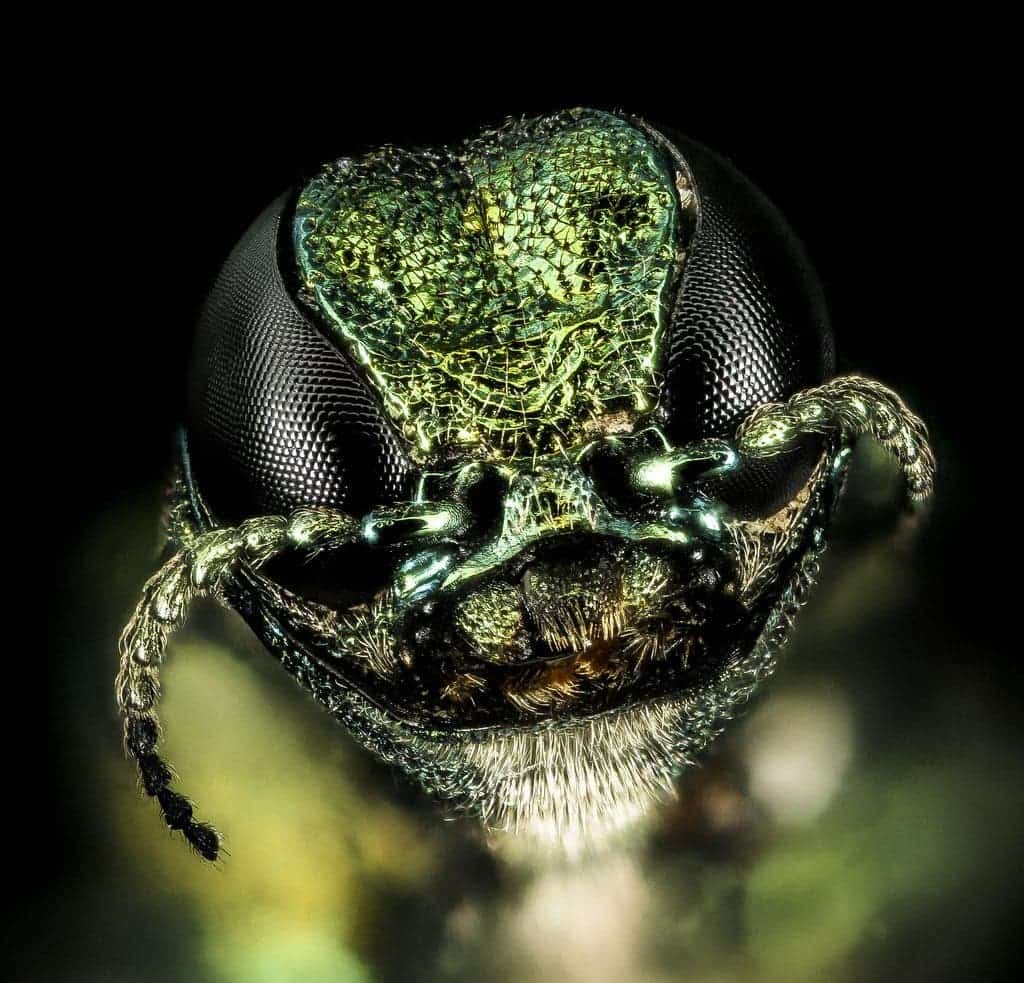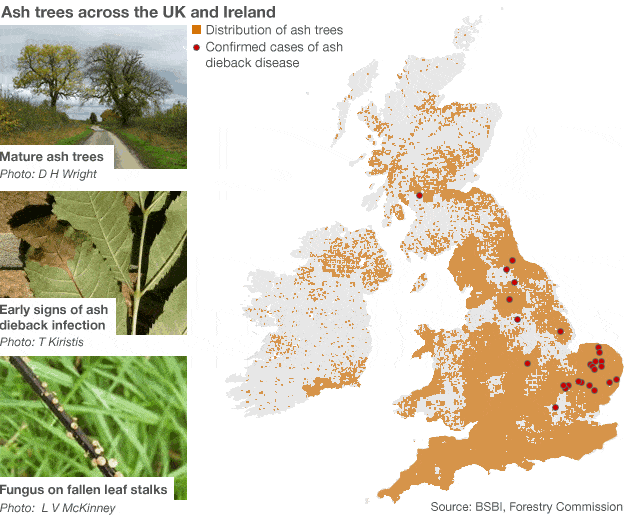Europe is likely to lose all its ash trees, the largest-ever survey of the species warns. Plagued by both a fungal disease known as ash-dieback and an invasive species of beetle, the emerald ash borer, the tree might be wiped clean off of the continent.

Trees have been a symbol for stability, endurance and stoicism in various arts for a long, long time now. So it’s almost hard to imagine that trees, just like other organisms, can be decimated by outbreaks of disease; but it does happen.
“Between the fungal disease ash dieback and a bright green beetle called the emerald ash borer, it is likely that almost all ash trees in Europe will be wiped out – just as the elm was largely eliminated by Dutch elm disease”.
In the 1970s, Europe’s almost 15 million elm trees became afflicted with the Dutch elm disease and were largely wiped out. Now, under pressure from both a highly aggressive species of invasive beetle and a fungal disease, the continent’s ash trees are facing their own extinction scenario. This is the most common hedgerow tree in the UK, with an estimated 60,000 miles of tree lines. It is the second most common tree in the country’s woodlands after oak, and there are countless ash trees planted in towns and cities.
“Between ash dieback and the emerald ash borer, it is likely that almost all ash trees in Europe will be wiped out, just as the elm was largely eliminated by Dutch elm disease,” said Peter Thomas, tree ecologist at Keele University, UK, and author of the study.
“The two together are a double whammy.”
I don’t even know what a double whammy is but it sounds terrifying. Thomas said that the arrival of the emerald ash borer in the UK is inevitable. This bright green beetle, native to Asia, feeds on ash trees and cause little damage to the plants. The real problem are the larvae which bore under the bark and into the wood, killing the tree.

Image credits USGS Bee Inventory and Monitoring Lab/ flikr
“It is quite a big beetle, originally from Asia, and can fly a long way. In the past, insect diseases have spread very quickly,” Thomas said.
Attempts to halt the beetle’s spread in North America, by baiting male beetles in traps with female pheromones for example, have failed.
“It is only a matter of time before it spreads across the rest of the Europe – including Britain. Our European ash is very susceptible to the beetle and the beetle is set to become the biggest threat faced by ash in Europe – potentially far more serious than ash dieback.”
Ash dieback was first seen in Eastern Europe in 1992, but has since spread over more than 2 million sq km, from Scandinavia to Italy. The first observed case in the UK was reported in 2012 — but, given the large number of areas in which it has been found, it must have arrived earlier. It’s currently spread from Norfolk and Suffolk to South Wales. Also known as Chalara, the disease is caused by the fungus Hymenoscyphus fraxineus and kills the leaves, then the branches, trunk and eventually the whole tree. It takes a few years for a full-grown tree to succumb to the disease, but a worse-case scenario (such as what happened in Denmark) could see 95% of ash trees lost to the fungus.

“We already have lots that are mortally wounded,” Thomas said.
Ash dieback will be virtually impossible to eradicate from the UK as its spores can be carried for more than 10 miles by wind and survive on woodland floors for four or five years.
But there is some hope. Ash trees are pretty genetically diverse, and some of them have developed a resistance to the fungus. Three genetic markers have been identified that encode this natural resistance, and future planting efforts will use trees selected for these markers. They could also be grafted into trees via genetic engineering.
“Natural tolerance to the disease exists and the UK is leading the way on work to identify resistant strains, investing more than £21m in tree health research. Our approach also includes protecting non-infected areas and managing infected trees,” a DEFRA spokeswoman said.
Defra (Department of Environment, Food and Rural Affairs) has the emerald ash borer listed as a “significant threat” and is working with other EU nations to contain its spread, such as suspending ash tree imports since ash dieback was first identified in the UK.
“If the ash went, the British countryside would never look the same again,” Thomas said.
But this still leaves the plants defenseless against the ash borer. Beyond the loss of the trees themselves, the species is associated with over 1,000 species of animals, birds and plants. In particular, over a 100 species of lichens, fungi and insects would decline or become extinct if the ash was gone. While it may well be too late to save most ash trees, more could have been done sooner.
“It beggars belief that we had known this disease was coming for decades but we didn’t do anything about it,” Thomas concludes.
The full paper, titled “Biological Flora of the British Isles: Fraxinus excelsior” has been published online in the Journal of Ecology and is available here.


